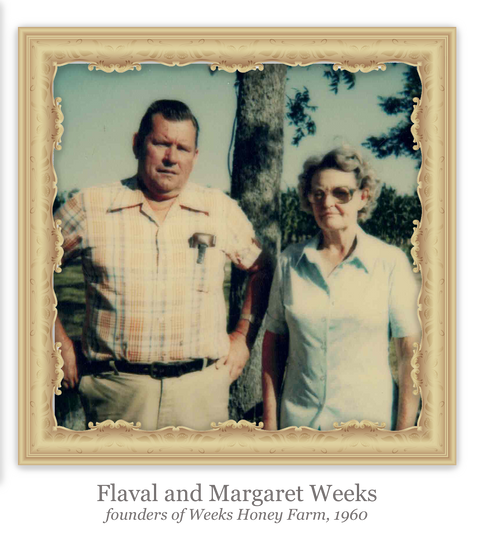What’s Really in Your Honey? Here is you Simple Guide!
Navigating Honey Adulteration: A Guide to Choosing Authentic Honey
Honey, nature's golden elixir produced by bees from flower nectar, has been cherished for millennia for its sweet taste, nutritional benefits, and medicinal properties. However, in today's global marketplace, honey adulteration— the deliberate addition of cheaper syrups, sugars, or fillers to mimic pure honey—has become a pervasive issue. This fraud not only erodes consumer trust but also undermines beekeepers' livelihoods and the vital role bees play in pollination. With the global honey market valued at USD 9.3 billion in 2023 and projected to grow at a compound annual growth rate (CAGR) of 5.2% through 2030, the incentives for adulteration are high, especially as over 60% of honey consumed worldwide is imported and traded across borders. Ingredient-conscious buyers, from health enthusiasts to ethical consumers, can arm themselves with knowledge and simple strategies to spot the real deal.
What Is Honey Adulteration and Why Does It Matter?
Adulteration typically involves mixing pure honey with inexpensive alternatives like high-fructose corn syrup, rice syrup, beet invert sugar, or even artificial sweeteners such as psicose. These additives dilute the honey's natural enzymes, antioxidants, and pollen traces, stripping away its health benefits—like antibacterial properties and immune support—while potentially introducing harmful contaminants. On a broader scale, it contributes to "honey laundering," where mislabeled imports flood markets, displacing genuine products and harming ecosystems by reducing demand for sustainable beekeeping.
The impacts extend beyond the plate: adulterated honey can exacerbate health issues like elevated blood sugar levels, obesity, and diabetes risks due to hidden sugars. Economically, it costs the industry billions annually, with small-scale producers in regions like Europe and North America hit hardest.
Worldwide Statistics: The Scale of the Problem
Honey ranks as the third-most-faked food globally, behind milk and olive oil, according to food fraud experts. Here's a snapshot of recent data highlighting the extent of adulteration:
| Region/Study | Key Statistic | Year | Source |
|---|---|---|---|
| European Union (Coordinated Action "From the Hives") | 46% of 320 sampled honeys suspicious for sugar adulteration (74% from China, 93% from Turkey) | 2021-2022 | EU Food Safety Report |
| United States (FDA Imported Honey Testing) | 14% of imported samples intentionally adulterated with undeclared sweeteners | 2022-2024 | FDA Analysis |
| Canada (National Testing) | 13% of commercial honeys found adulterated | 2022 | FDA Comparative Study |
| Global (Decernis Food Fraud Database) | Adulteration accounts for 26.48% of all reported honey fraud incidents | 2020-2024 | DigiComply Report |
| Intertek Global Testing (Psicose Focus) | 19.2% of 125 samples contained added foreign sugars | 2024 | Intertek Honey Report 2025 |
| Various Commercial Samples (AOAC Method) | 17.9% potentially adulterated | 2018 (updated trends similar in 2024) | Nature Scientific Reports |
These figures underscore a rising trend: from 2020 to 2024, reported honey fraud cases escalated by over 30%, driven by supply chain vulnerabilities in Asia and Eastern Europe. For more in-depth analysis, explore the EU Knowledge for Policy on Honey Adulteration.
Simple Steps to Read the Label
- Find words like "Raw and Unfiltered."
- Look for "Product of USA" as the origin.
- Make sure you flip it over to see if multiple countries are listed
- Avoid packages mentioning blends or any added ingredients.
- Seek out the name of the farm or beekeeper for real traceability.
Proven Strategies to Spot Real Honey: Mastering the Label
While lab testing (like NMR spectroscopy) is ideal for verification, most labs are not unbiased. Everyday shoppers should use these expanded label-reading tactics. Remember, pure honey should crystallize over time—a sign of authenticity, not spoilage.
- Seek "Raw and Unfiltered" Designations: True raw honey hasn't been heated above 118°F (48°C) or filtered to remove pollen, preserving its natural enzymes and nutrients. Look for these exact words; "pure" alone isn't regulated. Pro tip: Raw varieties often have a cloudy appearance and robust flavor. For global standards, the Codex Alimentarius (international food code) defines raw honey similarly—check Codex Honey Standards.
- Prioritize Single-Origin Labels like "Product of [Country]": Opt for honey sourced from one country to avoid blends that may hide adulterants. In the U.S., "Product of USA" means it was packed there, but bees must forage domestically—verify with the National Honey Board at honey.com. Worldwide, EU regulations require origin tracing; suspicious multi-country listings (e.g., "packed in EU from global sources") warrant caution, as 74% of EU-suspicious samples originated from China.
- Inspect the Fine Print for Multiple Countries or Blends: Flip the package and scan the back for phrases like "international blend" or listings of origins from high-risk areas (e.g., parts of Asia where 46% of exports face scrutiny). Pure honey avoids this; if origins span continents without clear separation, it could indicate laundering.
- Steer Clear of Added Ingredients or Vague Terms: Avoid labels with "syrup," "glucose," or "no added sugars" (which might imply hidden ones). The FDA flags undeclared sweeteners in 14% of imports—cross-check against FDA Honey Guidance. True honey lists just one ingredient: honey.
- Hunt for Farm or Beekeeper Names for Traceability: Brands with named, reputable apiaries offer accountability.

Weeks Honey Farm ALWAYS provides raw and unfiltered honey from the USA with no added fillers. Since 1960, our honey always comes straight from our family of beekeepers in Omega, Georgia, or from trusted partners here in America. You never find imported honey or added sweeteners in a Weeks jar.
When you choose Weeks, you are getting the authentic taste of real American honey. Taste it for yourself and see the difference.
Don't take our word for it- see what our customers are saying about us.





Comments (0)
There are no comments for this article. Be the first one to leave a message!